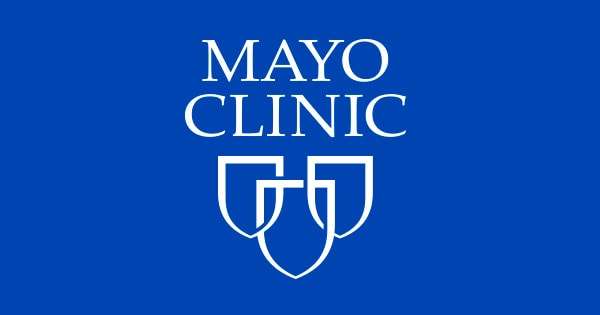As the number of people diagnosed with mental health issues such as depression rises to new highs, the need for medical services to treat them is growing too. Approximately 56 percent of American adults with a mental illness do not receive treatment. There’s also evidence of a dire lack of treatment among teens, with the CDC reporting that the suicide rate for teens is skyrocketing.
Why aren’t people getting the help they need? The answer is complicated. On one hand there’s the lingering stigma around mental illness that may hinder people from seeking care (a problem that campaigns like Mental Health Awareness Month aim to solve), but there’s also the fact that our health care system has yet to treat mental health as comprehensively as it does physical health. There’s no such thing as an insurance-covered annual mental health exam for instance, and therapists who do accept insurance are often working twice as hard just to get reimbursed by providers.
Having been through the ringer trying to not only find a therapist who accepts my insurance, but is also taking new clients, I’d just about given up on my personal quest for affordable services. Fortunately, after talking with a number of experts in the field, I’ve learned there a multiple ways to get the care I need without going broke in the process.
Seek in-network first — if you don’t have healthcare, turn to Federally Qualified Health Centers
“People with health insurance should begin their journey to wellness on their health plan’s website. Health plans may manage their mental health benefits internally, or outsource them to a vendor. The health plan or vendor will specify the mental healthcare providers that are covered, any associated costs, and any benefit limitations,” says Dr. Adam C. Powell, president of Payer+Provider Syndicate. “In many cases, health plans are required to offer comparable coverage for mental and physical healthcare coverage by the Paul Wellstone and Pete Domenici Mental Health Parity and Addiction Equity Act (MHPAEA). When MHPAEA applies, the financial requirements, quantitative treatment limitations, and non-quantitative treatment limitations applied to mental health benefits may not differ from those that are applied to physical health benefits.”
If insurance is not obtainable, Powell adds, you may seek help at a local social services agency, a student health center (if a student) or a Federally Qualified Health Center (aka, community-based healthcare centers that are government funded).
Sonya Veytsman, LCSW, suggests reaching out to the National Alliance on Mental Health (NAMI). “They have a helpline that offers free help 24/7. All you need to do is text NAMI to 741741.”
Avoid visiting the ER if possible, not only because you’ll likely get stuck with a huge bill, but because the ER, in Powell’s estimation, “is not designed to work with people to improve their mental health over time. Care should only be sought at an emergency department in the event of an urgent crisis.”
Private therapists will often work on a sliding scale — as low as $10/hour
Recently I found a few therapists who are taking new clients but not insurance. I was discouraged by their steep hourly rates and didn’t press, but I will now because often they’ll adjust their fee to match your financial resources.
“[We often] just ask the patient how much they can afford, and try our best to make it work,” says Dr. Laura Chackes, founder of The Center for Mindfulness & CBT in St. Louis, Missouri. “Most of our therapists who do a sliding scale will slide down from $120 to about $60 per session. I am bringing on an intern this fall who will be able to see patients at an even lower rate ranging from $10-$50 per hour.”
Kailee Place, an LPC with the private practice Shifting Tides Therapeutic Solutions adds that she doesn’t take insurance, but does “make room for lower cost sessions within my practice. I strongly believe people should get the care they want to get, so if I seem like the best fit for someone, I am [usually] 100 percent willing to work with them regarding their financial needs.”
See if you’re eligible for Medicaid for free therapy
If you don’t have insurance coverage, check to see if you qualify for Medicaid (your income is the determining factor).
“If a person does not have commercial insurance but has medical assistance (Medicaid), then they need to look for someone who is in their network,” says Dr. Jesse Matthews, a licensed psychologist.
“Most providers who take Medicaid work at clinics or community mental health centers. Sometimes these are affiliated with universities and are used as training sites for graduate students. If a person has Medicaid, they should be able to access mental health care free of charge.”
Your local training institutes may provide free sessions for up to two years
Dr. Fran Walfish, a psychotherapist, suggests contacting your local Psychoanalytic Training Institute.
“They generally require the patient to commit to three to five times a week psychoanalytic therapy sessions over a period of at least one to two years in duration in exchange for free therapy,” she tells NBC News BETTER. “The patient is assured to receive treatment from the same singular qualified M.D. who is getting supervision and advanced specific training in intensive long-term treatment.”
University hospitals are often eager to put students to work for a low fee — so are some non-profits
“Another alternative is to reach out to your closest teaching hospital that offers training programs to interns and residents,” adds Dr. Walfish. “Most qualified training hospitals have a department of psychiatry and outpatient psychology program that offers low-fee sliding scale psychotherapy. Finally, there are several private and state-funded non-profit agencies that offer very good quality psychotherapy on a sliding scale with fees set based on the individual’s prior income tax returns.”
Check out Open Path Psychotherapy Collective
Open Path Psychotherapy Collective is a nonprofit that matches middle- and lower-income people (and families) with affordable mental health services and education. Many therapists are working with them to help inform and provide for those in need, among them Vinodha Joly, LMFT.
Joly says she was happy to find a nonprofit that was aligned with her own personal values. “My experience with Open Path has been positive from the get-go as their mission is clearly to make mental health more affordable, without exploiting therapists who are willing to offer their services,” Joly explains. Open Path connects patients with mental health professionals with rates that range from $30 to $50 per hour.
Don’t give up — the resources are out there, possibly on your smartphone
Experts concur that it make take some time and effort to find a mental health provider, but your search will likely pay off. In the interim, you might want to turn to your smartphone.
“Tele-mental health in all forms has become a huge resource and there are great resources online offered by large health systems,” says Harry Nelson, managing partner of Nelson Hardiman, head of the Behavioral Health Association of Providers and co-author of “From ObamaCare To TrumpCare: Why You Should Care.” “The challenge there is that you need to be licensed in the state where the patient lives, but that said, we’ve seen a flourishing growth in treatment of all mental health by telemedicine and I expect it to grow exponentially.” Reach out to your local hospital system to ask if they offer these services.
If you’re really hurting, check into a clinic and/or call for help
If you’re desperately in need of immediate mental health services, visit a community mental health clinic. As Matthews points out, they “often offer low-cost treatment through use of interns or because they receive supplemental funding from places like the United Way.”
You should also contact the National Suicide Prevention Lifeline at 1-800-273-TALK if you’re in danger of self-harm. It’s free, open 24/7 and totally confidential.
More Mental Health Help
Want more tips like these? NBC News BETTER is obsessed with finding easier, healthier and smarter ways to live. Sign up for our newsletter and follow us on Facebook, Twitter and Instagram.
Many Americans Are Reaching Out For Mental Health Support — But Can’t Get It
 Enlarge this image
Enlarge this image
toggle caption
ljubaphoto/Getty Images
ljubaphoto/Getty Images
Ever since Marty Parrish was 17, he has struggled with bouts of major depression.
“It tends to run in cycles,” recalls the resident, now 58, of Johnston, Iowa, a suburb of Des Moines. “When I’m on medication, and medication is working, my symptoms are alleviated.”
But his symptoms would often return when he had to stop taking medication because of side effects from long-term use. Finding a new medication that worked could take weeks or even months, he says, during which he’d find himself slipping back “into a brain fog, in a dark hole of depression.”
Eventually his mental illness cost him his marriage, business and home. And his treatment came to a halt.
“I could go to a free county mental health clinic and see a counselor, or a therapist,” he says. “I could even get a prescription for medication, but I couldn’t pay for the medication.”
For many Americans who, like Parrish, live with a mood disorder, cost remains a major hurdle to accessing mental health care, according to a survey on mood disorders published this week by the National Alliance on Mental Illness, or NAMI.
Over half of the survey’s respondents (which included people living with mood disorders and their caregivers) said that cost prevents them from trying a treatment they’re interested in, says psychiatrist Ken Duckworth, NAMI’s chief medical officer.
Cost was also the reason for discontinuing treatment for about a quarter of the respondents who were able to get care.
Even finding a mental health care provider can be hard
The survey also revealed that many people don’t even know how to find mental health support.
“Forty-eight percent are unsure if they’re eligible to receive care, and nearly as many are unsure about how to access services,” Duckworth says.
“All of those issues are barriers to care,” notes Sika Yeboah-Sampong, a staff attorney at the advocacy group Legal Action Center who works with a New York state program to expand access to addiction and mental health services.
For one, many people with mood disorders are unemployed and uninsured, says David Lloyd, a senior policy adviser at the mental health advocacy group the Kennedy Forum.
“Some of these conditions — they’re particularly disabling [and] can result in people being unemployed,” he says. Losing insurance that way is not uncommon.
But even for people with Medicaid or private health insurance, getting access to therapy and other kinds of mental health support remains complicated, hard to navigate and expensive, Yeboah-Sampong says.
For one, insurers’ directories for in-network mental health care providers “aren’t always accurate or up to date,” she says. It’s not uncommon to find names of providers there who have died, moved away or retired.
And even accurate in-network listings for mental health tend to be small.
Why aren’t more therapists in network?
“One reason that the lists are narrow, it’s that historically reimbursement rates for mental health providers have been much lower than for physical health providers,” Yeboah-Sampong says.
That continues to be true, according to a 2019 analysis by Milliman, a risk management company.
As a result, a large proportion of therapists and psychiatrists are out of network, she says, and in-network providers are often overworked with long waitlists.
All of this forces people with a mental illness to seek out-of-network care.
“What we see all the time is either a plan doesn’t have any out-of-network benefit at all — in which case you’re paying completely out of pocket — or the much higher cost-sharing for the out-of-network provider,” Lloyd says. That can deter families from reaching out to get the help they need.
Why patients often ration their use of mental health care
Patients will instead pay for as long as they can — say two to three months — “and then, the funds run out, and they have no care,” Yeboah-Sampong says.
Ultimately, these hurdles to getting mental health care produce a lack of parity between insurance coverage of mental and physical health, she adds, despite the 2008 Mental Health Parity and Addiction Equity Act, which requires insurers to cover mental health the same way they cover physical health.
“There’s just a lack of enforcement [of] the federal parity law,” Yeboah-Sampong says.
Any money insurers save there shows up as other costs, Lloyd notes — untreated mental illness is closely linked to poorer physical health. And then, there are costs associated with disability and unemployment. “And of course, we’ve seen huge spikes in fatal overdoses over the last year,” he adds.
With the rise in mental health symptoms during the pandemic, he says, it’s even more urgent to improve access to care for everybody. People are now more open to discussing their mental health, this week’s survey notes.
People who do get treatment find it helpful
“The public is beginning to recognize in a new way that mental health is a health care priority, and a large percentage of people seem to appreciate that it could happen to anyone,” Duckworth says.
The survey also found that when people were able to get treatment, the majority — 70% — found it helpful.
After years of homelessness, Parrish was eventually able to get the mental health support — including the medications — he needed to get his health and life back. He credits his recovery to the undying support of one person in his life.
“I ultimately found support in an individual who later became my wife — who understood the challenges [I] faced,” he says. She “was down there with me, even to the point of assisting by taking me to appointments, to make sure that I got my medications.”


